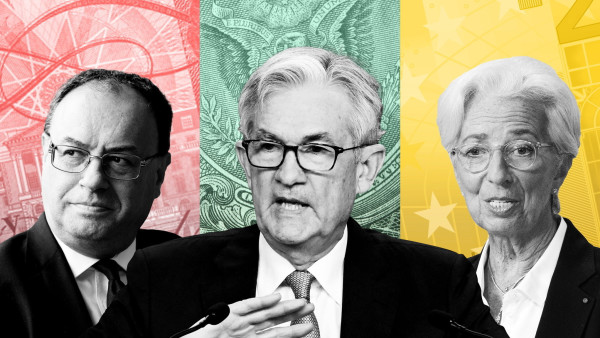The rise in interest rates this year has triggered a series of market reactions that have ravaged returns for most investors.
And as the year comes to an end, clients examining their portfolio may find that it is the bond allocation that has performed worst.
That flies in the face of established portfolio construction theory, which states that bonds and equities are inversely correlated.
Since the beginning of 2022, investors' expectations around the pace and permanence of inflation rates has been revised sharply upwards, prompting a sell-off in bonds, while equities have also suffered.
Alongside the revised inflation expectations has come rising fears around the health of the global economy, and those are the circumstances in which investors might turn to lower risk assets.

Currently much of the inflationary news is already factored into bond prices, this is why bonds have made such large losses this year.
Andrew Surrey, VanguardAndrew Surrey, senior national development manager at Vanguard, says: “Bond markets have reacted to inflation, specifically shorter maturity bonds. However, markets also have started to price in an increased probability of recession. This is one of the reasons yields remain below inflation.
"At the start of the year bonds were challenged by low yields (with less of a buffer to absorb interest rate headwinds); interest rate expectations have since risen significantly, both in terms of speed and magnitude.”
Those circumstances present investors with a dilemma, because although bond yields have risen, inflation has risen by even more, meaning the yields remain negative in real terms.
Bargain hunting
But for Ian Brady, chief investment officer at WH Ireland, there is not really a dilemma now.
He says: “We recently started to materially increase our exposure to bonds, after quite a number of years where we had basically the minimum we could have. This is because the yields are now attractive enough to make it worthwhile. Even short-dated US Treasury bonds, which are basically the risk-free investment in the world, are yielding 4 per cent.”
He acknowledges that even 4 per cent, or the higher yields available from other fixed income assets, trails the prevailing rate of inflation, but he says: “The reality is that some of the biggest leading indicators on inflation, such as US housing and gas prices are falling over. Inflation is likely to be much lower next year.”
In that scenario, the purchasing power of the coupon paid from the bond rises, which would be expected to boost the capital value of bonds already in the market.

On a total return basis, bond investors should expect low double digit returns next year.
Sajiv Vaid, Fidelity










